IB Microeconomics
Real World Examples (RWE's) Market power
Using real world examples, discuss the impact of large firms having significant market power [15]
Here the question is wide enough to accept a discussion of any market structure (apart from perfect competition)! However, covering three structures within the time limit is probably a bit ambitious! With that in mind, how about choosing two structures with significant differences?
Let’s have a look at the key differences between monopolistic competition and oligopoly.
Key characteristics of oligopolistic and monopolistic market structures
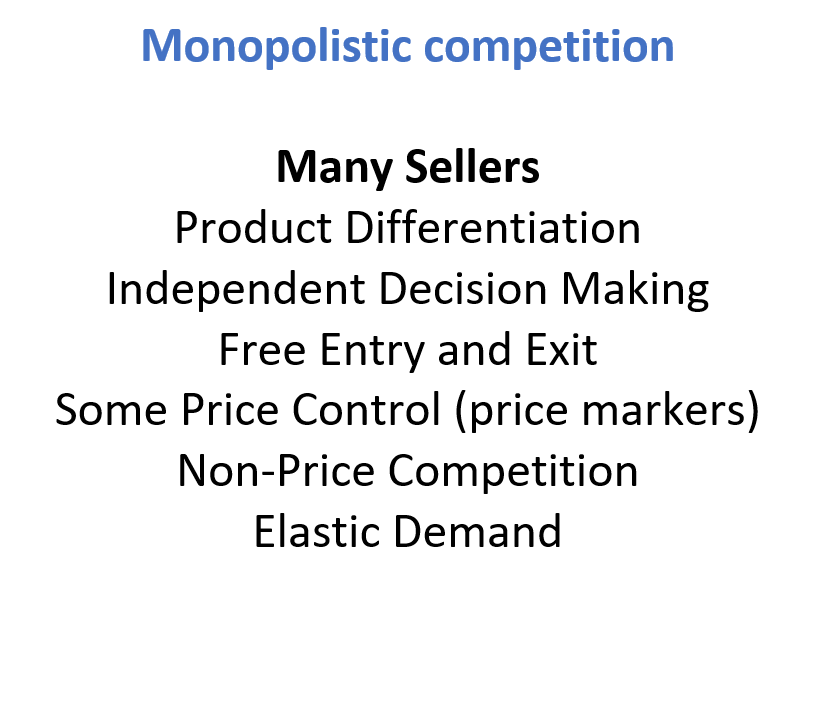

The two diagrams (below) represent monopolistic competition in the short and long run. In the short run, this structure can create abnormal profits (where AR > AC) which is the distance between red and yellow dots, vertically (in diagram 1)
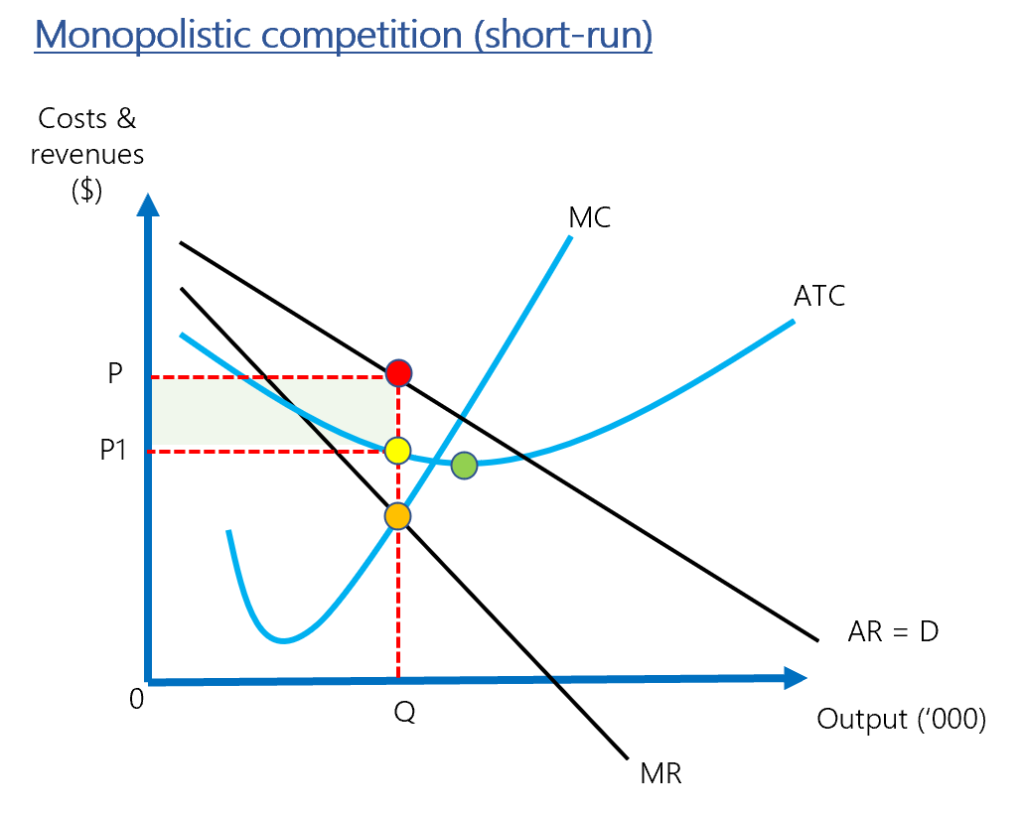
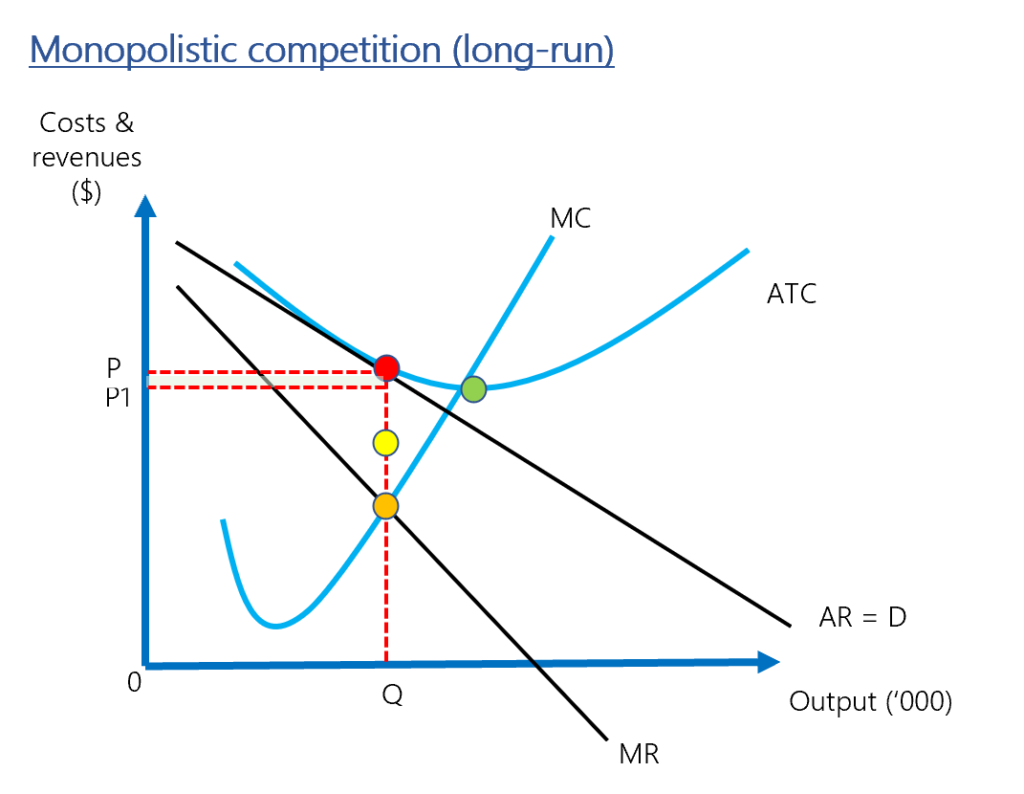
However, the market signals this opportunity that exists in the short run to new entrants. As new entrants enter the market, demand for individual sellers falls and the abnormal profits are eroded away until price equals cots (AR = AC) which is seen as the extremely close gap between the red and green dots (vertically) in diagram 2. This market mechanism of signaling trades away supernormal profits and reduces the inefficiencies witnessed in the short run, where quantity supplied is low, price is higher than average cost and the consumer is exploited which leads to market failure.
In terms of market power, the oligopolist possesses greater market power when compared due to higher barriers to entry and exit. There is also the possibility that these barriers can be defended by explicit or implicit collusion, whereby sellers agree to behave in a coordinated way to deter new entrants or to hasten their departure, if a new seller enters the market. Consumer surplus may be damaged to a greater extent under oligopolistic conditions as prices are maintained at an artificially higher level, to the benefit of the producer.
Is there anything positive about market power?
- Monopolistic competition offers choice and differentiated products compared to perfect competitions homogenous products, which adds to consumers utility!
- Large firms may use abnormal profit to invest in research and development, constant improvement of products leading to higher quality products (dynamic efficiency)
- Market power can lead to economies of scale, which may ultimately be passed onto the consumer as lower prices. There may also be gains to using resources more efficiently than many smaller companies, which could be argued to conserve resources (x-efficiency)
- Dominant firms may offer market stability in terms of price and supply, which benefits consumers! Imagine for example, an expensive technology purchase that needs servicing or returning – only to find the company has gone bankrupt!
- Similarly, dominant firms may develop international appeal and sell in global markets, like Tesla or Apple, which contribute towards domestic economic growth and prosperity!
- From a government perspective, there is a regulatory efficiency gain from fewer larger companies compared to perfect competition markets.
- Similarly, there is also significant tax revenue to be collected from large firms, which can be reinvested into infrastructure and the economy more widely!

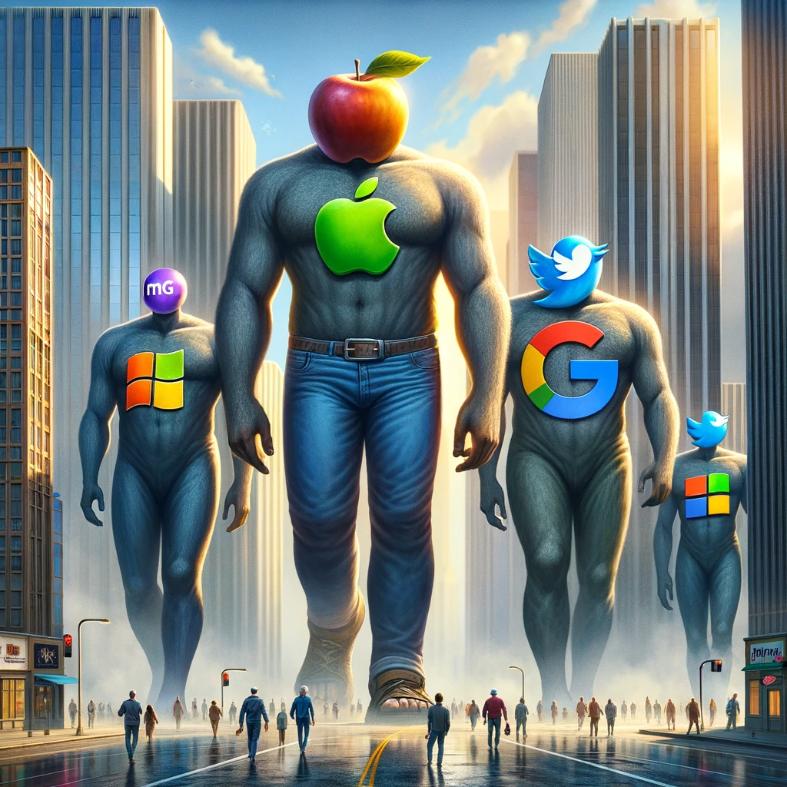
Tech Giants (Technology market)
Companies like Google, Amazon, Facebook, and Apple dominate their respective sectors, from online retail to social media platforms. Their dominance can stifle competition, inhibit innovation from smaller players, and raise concerns about privacy, data security, and market manipulation. The favourable argument that their super normal profits have led to constant reinvestment and much-loved products and services. However, the counterargument or question is quite relevant. ‘Are the barriers to entry and the higher prices worth it in terms of the benefits to the consumer’?

Tesla (Market for EV's)
US EV producer Tesla sold almost 1m of its cars into the Chinese market in 2023! This incredible market power extends to foreign countries, which may have disruptive effects on the Chinese market. China has heavily subsidized Chinese electric vehicles, which are now under direct price competition from TESLA, which may damage the Chinese vehicle industry by outcompeting the local offerings! It seems TESLA is able to reduce its prices as TESLA make huge numbers and may well benefit from a range of economies of scale as well as potential subsidies and almost zero advertising costs!
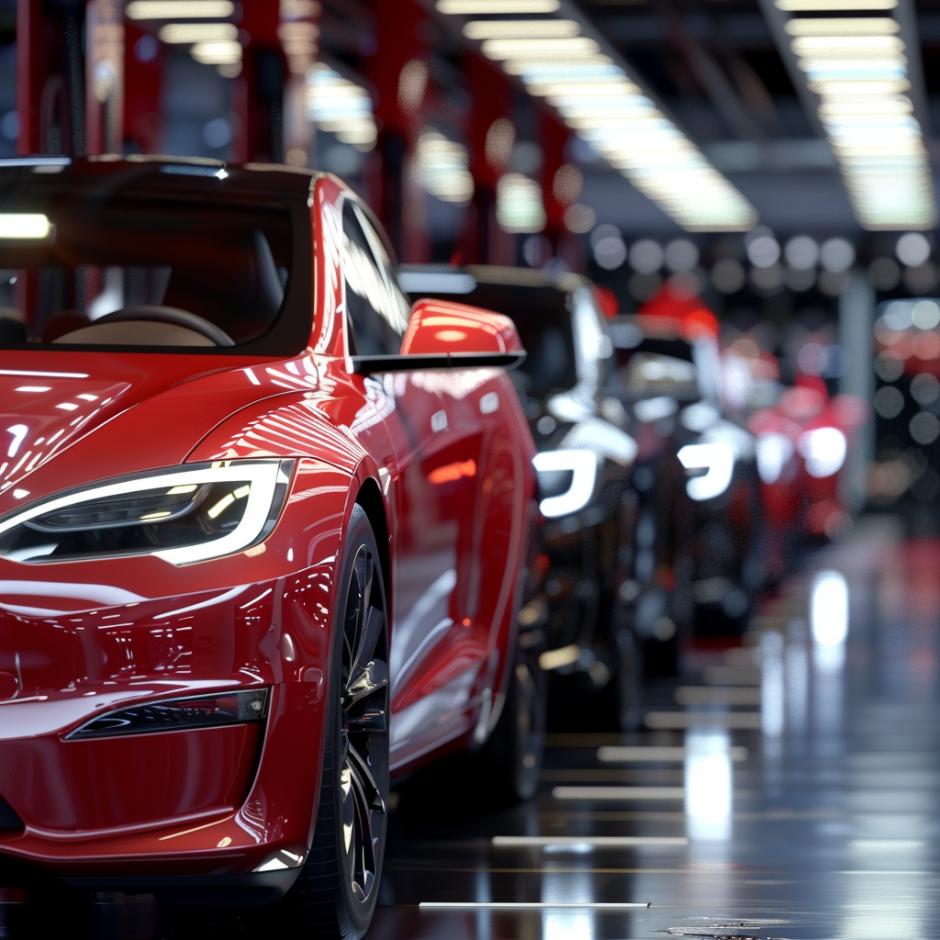
OPEC (Market for oil)
OPEC (Organisation of petroleum exporting countries):
OPEC’s market power was highest around the 1970’s but has been eroded somewhat by the new supplies of US oil, accessed by fracking. However, the oil producing countries (centered around the Gulf) were able to use tacit collusion to reduce supply and hence, raise prices due to highly inelastic demand. OPEC display oligopolistic like behaviour but have also been directly criticized for acting or being a cartel! In this case, consumer surplus is damaged and producer revenues soar as supply is tightened. Just like firms in an oligopoly, OPEC member countries are interdependent. Decisions made by one member can have significant implications for the others, which is why coordination of policies is crucial.

Pfizer (Pharmaceutical industry)
Since 2015, Pfizer has acquired several competitors through mergers, such as Hospira, Pharmacia, Wyeth, Lambert. This has caused regulatory concerns as their concentration ratio (an indication of the level of competition in the market) increases. This offers Pfizer growing market power, but with the potential to limit supply or charge higher prices. This in turn can lead to problems regulating a company that has significant lobbying power and influence, particularly in times of emergencies, like Covid.
In addition, vaccine companies such as Pfizer have come under scrutiny for failing to provide vaccines to LEDC’s at a price they can afford. Pfizer in turn, are able to justify very high prices given the huge investment in research and development needed to create a working vaccine! Critiques also argue that patents of vaccines contribute to high prices and artificial barriers to entry to competition!




